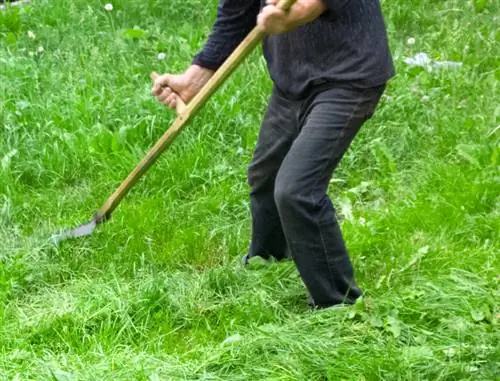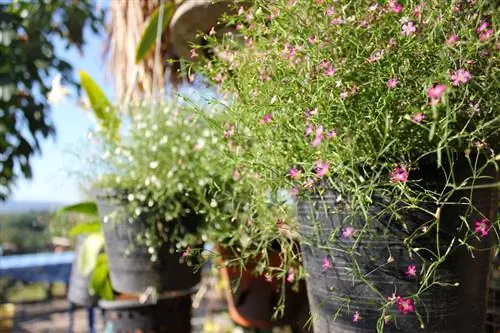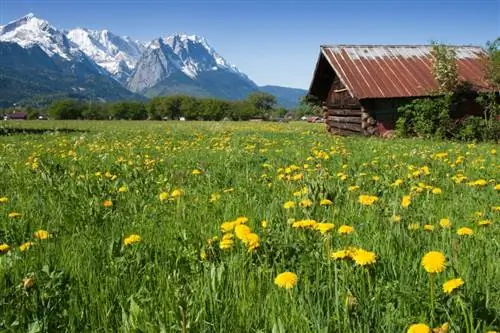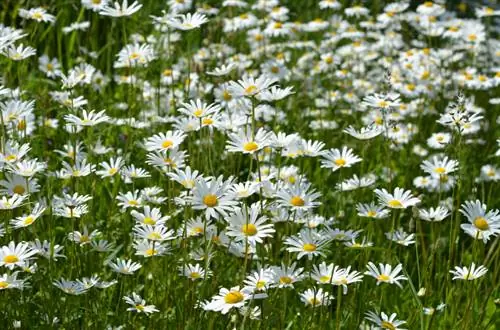- Author admin [email protected].
- Public 2023-12-16 16:46.
- Last modified 2025-01-23 11:20.
Flower meadows are nowhere near as maintenance-intensive as a lawn, which has to be mowed at least four to six times a year and also fertilized and watered regularly. However, you must not leave meadows to their own devices, otherwise they will become wild.
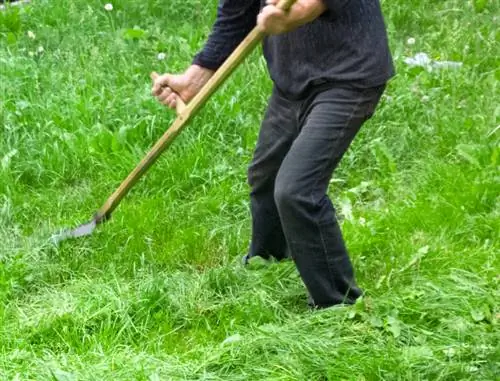
When and how do I mow a meadow correctly?
A meadow should ideally be mown twice a year, in the second half of June and in August, to ensure biodiversity. Use a scythe or let grazing animals such as sheep and geese tend the meadow naturally.
Regular mowing ensures biodiversity
This renaturation is a completely natural process, as a result of which the herbs and flowering plants typical of a meadow would initially be displaced by more competitive plants. In particular, shrubs and bushes (e.g. blackberries) as well as easily spreading and fast-growing trees such as maple and birch will overgrow the former meadow. In between, stubborn grasses thrive. This development can only be stopped through caring measures, especially mowing. Mowing ensures that competitive plants are pushed back and more sensitive flowers and herbs are given a chance to grow.
The right time for mowing
The most important thing is the right time for mowing. If possible, only mow your meadow when the flowers and herbs have bloomed and are whole. In this way, you ensure that the seeds of the desired plants have enough light and space to germinate - about three to four weeks after mowing, the seeds germinate (most meadow flowers are light germinators) and grow into new flowers and herbs. Traditionally, meadows are mowed in the second half of June and August.
Natural meadow care by sheep or geese
Of course, you can't use a normal lawnmower to mow meadows, as it would be hopelessly overwhelmed by such a task. Finally, the plants grow diligently until the first mowing at the end of June and reach a considerable height by then. Normally you can only get through the thicket with the help of a scythe (€179.00 on Amazon). But this is physically quite strenuous and, depending on the size of the meadow, can turn into a rather extensive task. Perhaps a well-known farmer can help you with a tractor and mower; otherwise, depending on the type of meadow, grazing animals are also suitable for gentle management. Sheep and goats in particular are undemanding, but geese are also quite frugal. Horse meadows, on the other hand, have to meet strict requirements because the animals are comparatively picky (and sensitive).
Tips & Tricks
Of course, you don't have to be the owner of the sheep or goats yourself - perhaps a friend or neighbor would like to keep animals but doesn't have the space for it? This way you save a lot of work and feeding costs.

